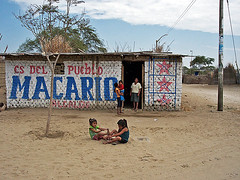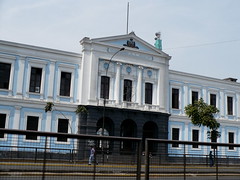Lima’s Fog Nets, catching water for the city’s poor [Featured]
The BBC’s Dan Collyns introduces us to a fascinating project to bring drinking water to the poorest areas of rainless but foggy Lima.
They look like huge abandoned volleyball nets facing west towards the Pacific Ocean on one of the many hillsides in the Peruvian capital, Lima.
They started as an experiment two years ago and now they are giving a lifeline to some of Lima’s poorest residents.
The Peruvian capital gets an average of just over 40mm (1.5 inches) of rainfall a year but what it does not get in showers, it makes up for in fog.
For nine months of the year, much of the coastal city is shrouded in sea mist and these nets are being used to trap it.
The nets capture the fog in their thick plastic mesh and the drops fall into makeshift gutters that run along the bottom and drain into swimming pool-sized collection tanks further down the hillside.
Using four of these simple 8m x 4m structures, this community, perched on the foothills of the Andes in Lima’s Villa Maria del Triunfo district, can harvest around 240 litres of water every night and the similar amount during the course of the day.
Ironically for a place almost constantly shrouded in fog, it is called Bellavista, which means “nice view”.
“These fog nets have improved our quality of life. We can grow vegetables for our families and use all this moisture in the fog which would otherwise be wasted rather than having to buy water,” said Noe Neira Tocto.
The vegetables helped to feed the low-income families but they still had to buy water for domestic uses such as washing and cooking, he said.
Tags: bbc, bellavista, fog, lima, poverty, villa maria del triunfo, water crisis, weather, [Featured]






![Panettone Madness [Featured]](http://farm4.static.flickr.com/3243/3130365842_175432d5fa_m.jpg)



